
views
X
Research source
There are about 350 different species and types of salamanders, all of which are carnivorous and none of which make sounds.[2]
X
Research source
Although salamanders are not typical pets, in part because they shouldn’t be handled, you may enjoy watching them in an aquarium in your home.[3]
X
Research source
By carefully capturing a salamander and caring for it properly, you can enjoy these beautiful creatures.
Capturing a Salamander
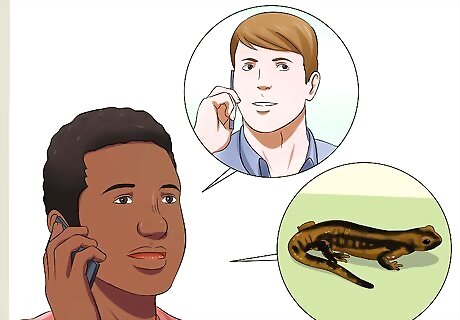
Learn about salamanders. Get to know something about salamander behavior before you catch them. This can help you more effectively catch a salamander or many of them without harming the animal. Contact your local county extension to help identify salamanders in your local area. Some facts to know about salamanders you should learn are: they are completely harmless to people and plants most don’t grow beyond 6 inches they are smooth-skinned they live in moist places like under rocks, logs, and in mulch. healthy salamanders will be skittish around humans.
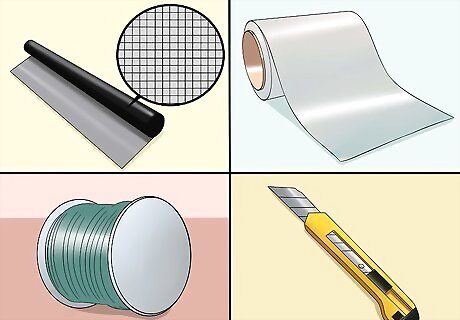
Collect trapping equipment. It can be fairly easy to trap salamanders in ponds or near other bodies of water. By putting together trapping materials before you start, you can effectively catch your salamander(s). You’ll need the following items: 24 ft. of 18 inch wide aluminum window screening or 15 ft. of 28 inch wide screening for the cylinders 15 ft. of 36 inch wide fiberglass screening for the funnels 25 ft. of string or small rope for the handles Utility knife and scissors for cutting the screen and rope Stapler with 1000 staples A small fish net if you want to catch or other container, such as a jar with some water in it. Make sure it has holes in the lid so the salamander can breathe. A glow stick or outdoor light bulb, which studies have shown can be an effective bait for trapping amphibians.
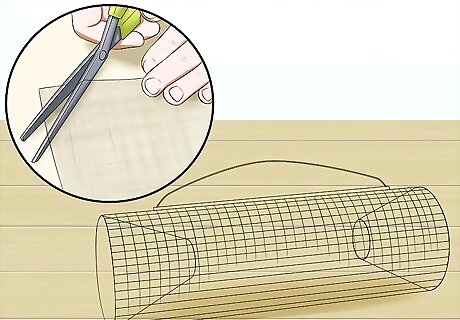
Construct a funnel trap. Although you can purchase commercially made funnel traps for salamanders, they may not be as effective as traps you make yourself. Using the material you gathered, put together your funnel trap and place it in the water to catch your new pets. Cut a rectangular piece of aluminum window screening using the scissors or utility knife for the cylinders. Roll the cut piece of screening into a cylinder 18” long and 8” in diameter. Leave a 1” lip on the top of the cylinder by holding the 18” end and rolling it towards the other end. Staple the 1” screening lip along the base of the lip where it meets the cylinder screening to hold the cylinder and lip together. Cut out two funnels from the fiberglass screening with a 9” opening on the wide end, and 1 ¾” opening on the narrow end of each piece. Roll the wide ends of the funnels over the outside edges of the cylinder and staple every ½” with the stapler. Attach a 30” string handle to the lip and attach it with duct tape to both ends of the 1” aluminum lip.
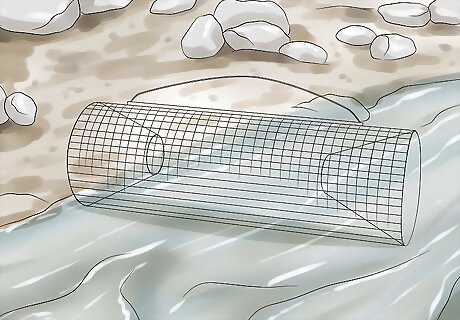
Place the funnel trap in the salamander’s habitat. Most salamanders live and breed near water because their skin requires moisture. Where you place your funnel trap will depend on the time of year, since many salamanders burrow in the winter. Find a stagnant, or non-flowing, water source like a swamp, pond, or vernal pool. Place the trap near the bottom of a pond in the winter. Put the trap by burrows and wooded areas in the late spring and early summer. Make sure these are close to stagnant bodies of water as well.
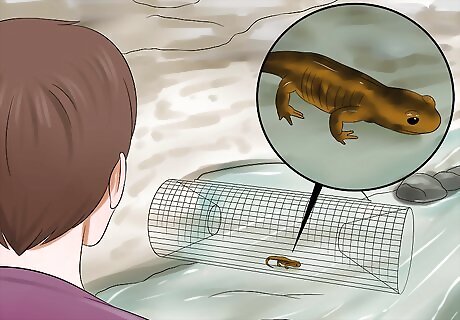
Check your traps. Within twenty-four hours of setting your traps, see if you’ve caught any salamanders. You may also capture species other than salamanders and can return these to the wild. If the trap is empty, leave it in place and continue to check until you find a salamander. Take a plastic bag or jar with pinholes or a bucket of water to catch and transfer your salamander to its new habitat.
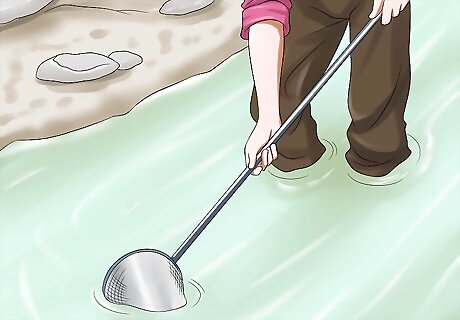
Net a salamander. If you choose to actively net a salamander instead of using funnel traps, find them in the same places where you would set traps. Consider using a glow stick to attract salamanders into your net. Wear a pair of waders or tall water proof pants so you can walk out into water. Sweep the net through the water by holding the net from the handle. Run the net, hoop first, through the water down-angled into the muck at the bottom of the pond or stream.
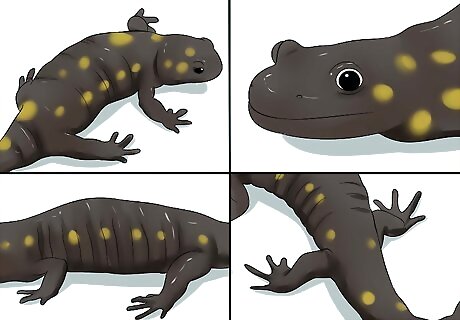
Observe the salamander’s health. When you catch a salamander, check its health before you take it home to its new habitat. This can ensure that it doesn’t die or introduce diseases to a currently salamander colony you have. The following traits indicate a healthy salamander: Plump but not bloated No visible bones in the rib, abdominal, or hip area Clear skin with no cuts, scratches, or discolored patches Clear and alert eyes No secretions or inflammation.
Caring for Your Salamander
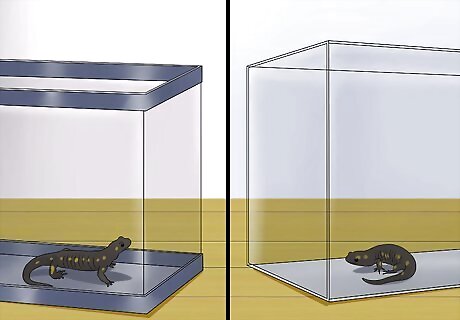
Quarantine new animals. If you have an established colony of salamanders, quarantine your new animals for a few weeks. This can ensure that they are healthy and don’t wipe out any other animals with disease. Be aware that fungal infections are very common in salamanders and often fatal. Keep quarantined animals in buckets or, ideally, in separate aquariums.
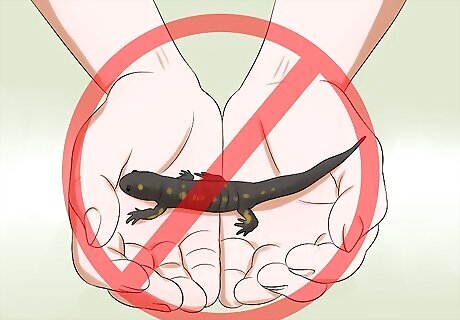
Avoid handling salamanders. As adorable as salamanders are, it is very important to not handle them unless absolutely necessary, such as transferring the animal to its new habitat. Secretions, salt and heat from human skin or substances on it can harm salamanders. Wash your hands in hot and soapy water before handing the salamander. Make sure to remove any soap residue from your skin so you don’t harm your salamander. Transferring or touching your salamander with a small net is the best way to not harm it.
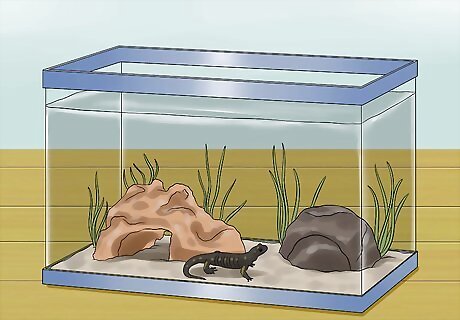
Transfer your salamander to her new habitat. Once you’ve checked the health of your salamander, you are ready to move her to her new habitat. Giving her a clean and fun environment may help her live for up to 20 years. Your habitat should include: a clean aquarium large enough to accommodate all of your salamanders two to three inches of sloped and washed aquarium gravel to line the tank plants that have been washed so they don’t introduce diseases or fungi to the salamanders a sufficient source of sunlight a water filter a lid.
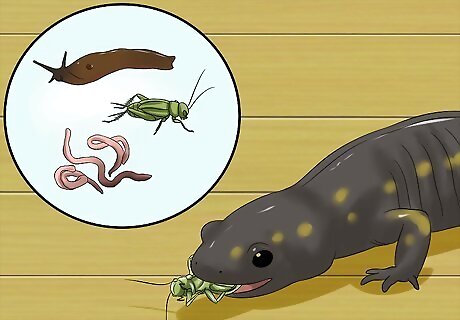
Feed your salamander. All species of salamanders are carnivores but may eat their meals very slowly. Salamanders eat different types of animals depending on their size; larger salamanders will go for larger prey. Give your salamander food on alternate days five days a week. These foods can include: earthworms or wax worms slugs snails crickets frozen brine Mysis shrimp fish crayfish mice shrews spiders centipedes.
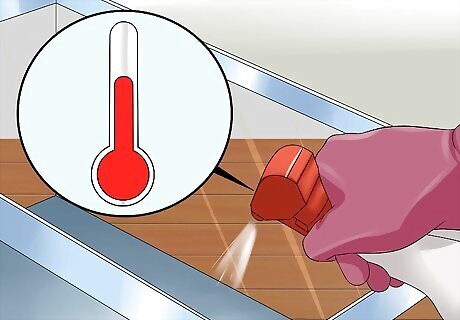
Clean the habitat. Salamander enclosures are havens for bacteria and fungi. Keep your salamander’s aquarium very clean to maintain her health and prevent the growth of harmful organisms. Place a water filter in the aquarium to keep the water clean between more thorough disinfection. Disinfect the aquarium with hot, soapy water every couple of weeks or more often if you notice it is dirty. Transfer the salamanders to holding tanks while you’re cleaning. Make sure to rinse the aquarium thoroughly so any residue doesn’t harm your salamander.
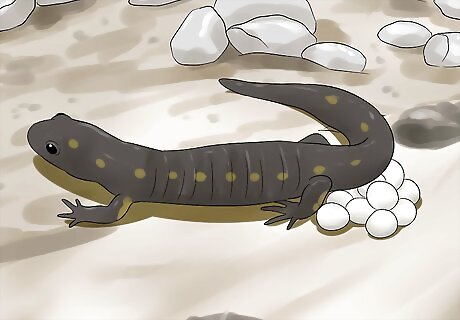
Watch for eggs. If you’ve got multiple salamanders in a habitat, they may reproduce. Keep an eye out for salamander eggs under the water in the tank or on ground surfaces. Be aware that many salamanders go through egg, large, juvenile, and adult life stages. Some species, however, will hatch directly into small salamanders. Capture eggs or larva in a small net and release them into the wild if you don’t want to keep the babies.















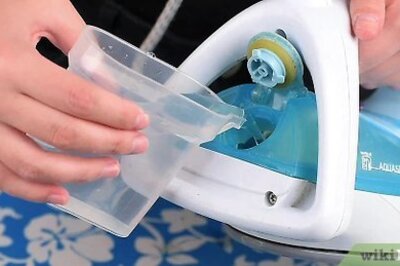



Comments
0 comment